Understanding the Volcano Risk in Italy
Breaking News: Campi Flegrei: Experts say volcano is in an "extremely dangerous state" Scroll down for more about Campi Flegrei and a link to the study.
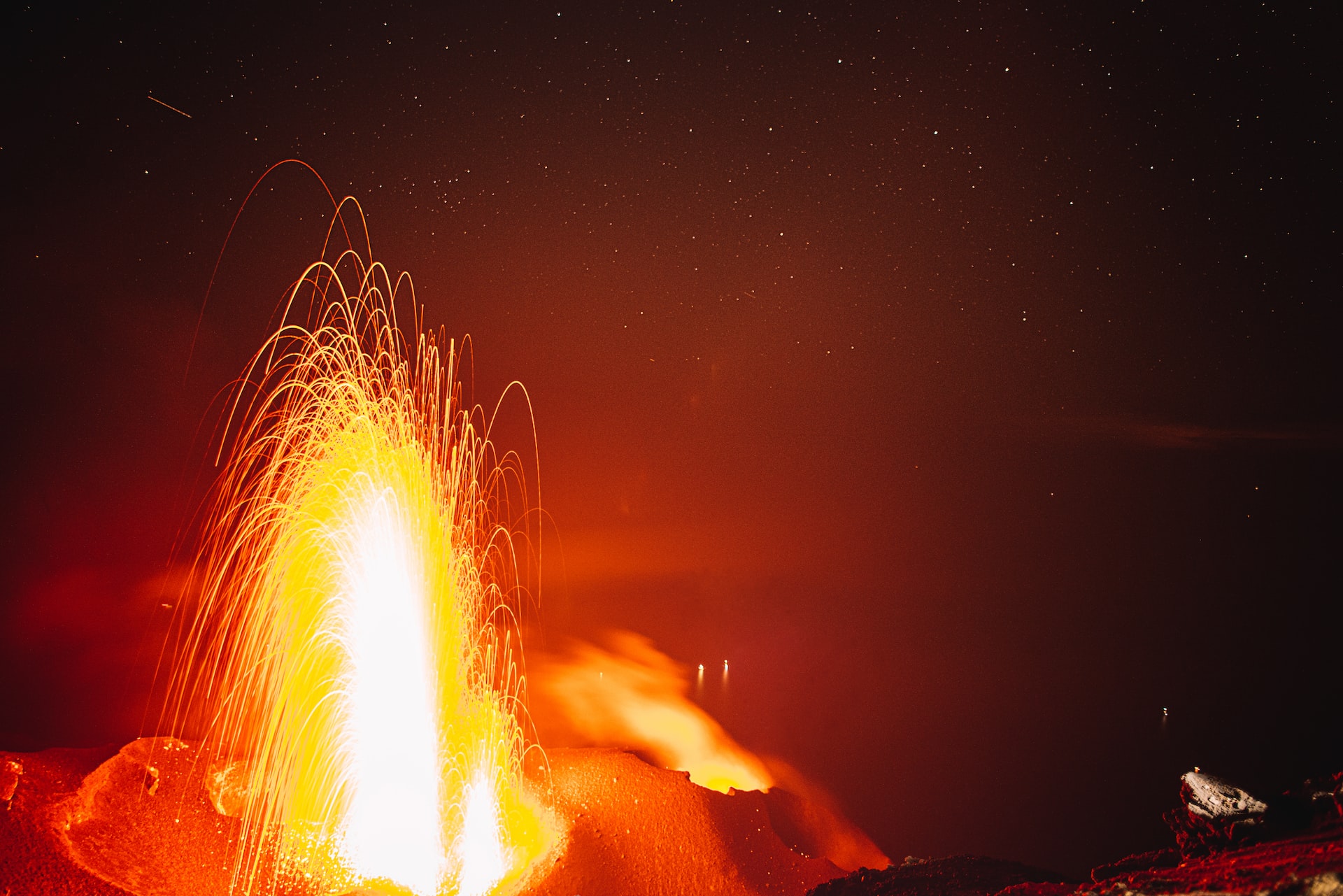
Italy is home to a remarkable collection of volcanoes, beautiful in many ways but also rather frightening. The raw power and unpredictable nature of these geological wonders are obvious to anyone who has ever visited Pompeii and seen the results of volcanic hell being unleashed upon the unsuspecting citizens of this once quiet and prosperous town.
So, is there a risk of your vacation city turning into the next Pompeii?
Well, the risks are absolutely tiny if you are visiting Italy on vacation. With most of these volcanoes, major eruptions only occur thousands of years apart, so they are unlikely to happen during the few weeks you are in Italy.
For me personally, it is not even a consideration when I travel within Italy. In fact, many of the best southern Italian destinations we feature are near volcanoes, and one of the great train journeys we feature on Traveling by Train in Italy is along the slopes of Mount Etna.
Investing in real estate near these volcanic areas is a little different,
Buying your dream home in Italy can be daunting enough, you've got all those dubious 1 Euro house minefields to navigate and much else too. Most people forget about earthquakes and volcanoes.
That's a mistake.
You need a thorough understanding of the associated risks. The stunning landscapes and panoramic views come at the cost of potential vulnerabilities. Lava flows, ashfall, and pyroclastic flows are just some of the hazards that can pose substantial threats to properties and safety. It is essential to take into account the potential impact of volcanic activity on infrastructure and property values.
It is crucial for prospective buyers to conduct extensive research, seek professional advice, and evaluate the volcanic risk factors meticulously. Understanding evacuation plans, monitoring systems, and the historical eruption patterns of each volcano can help make informed decisions while safeguarding lives and investments.
Italy's Most Dangerous Volcanoes
Mount Etna: Majestic and Unpredictable
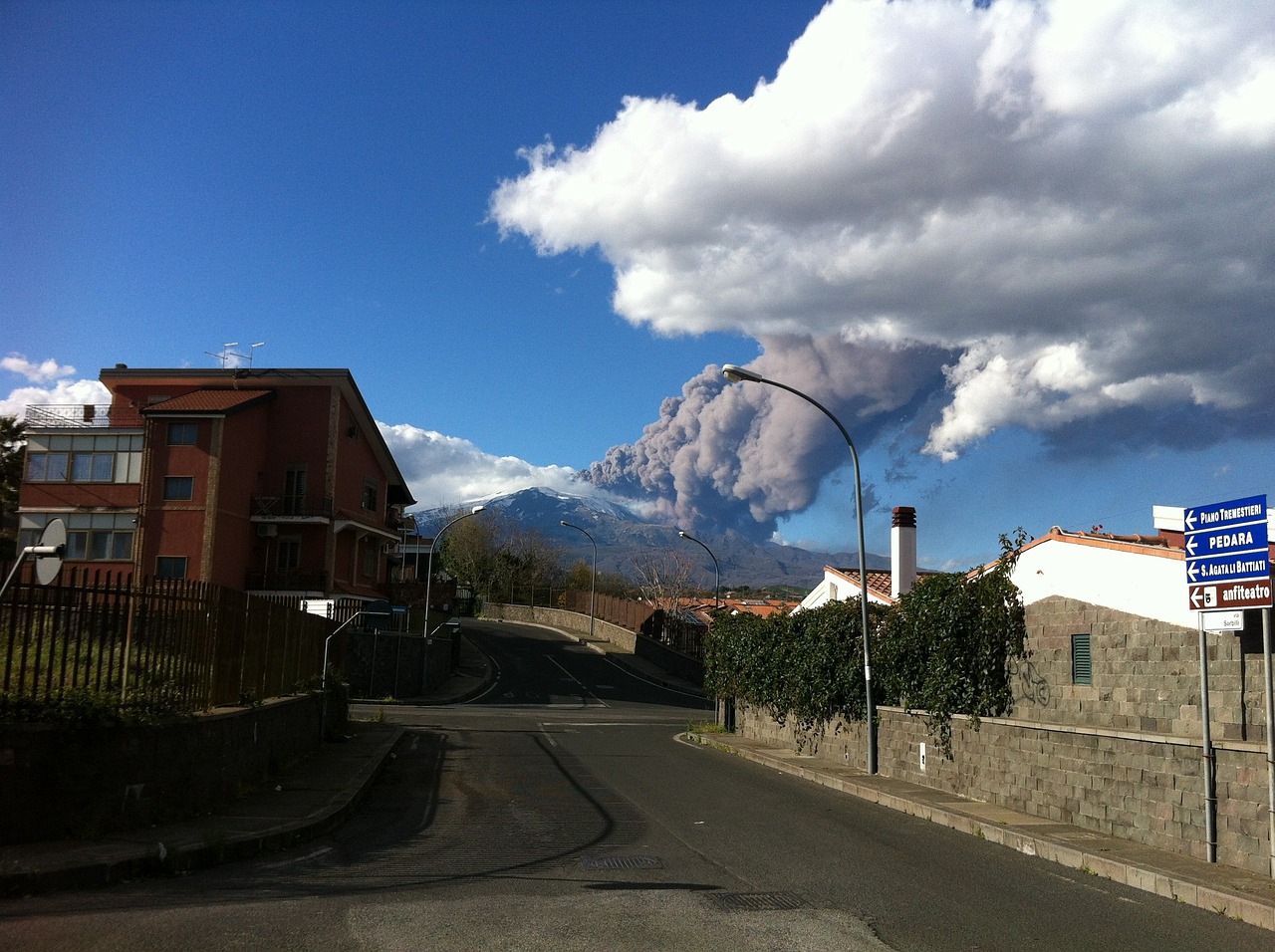
Rising majestically on the island of Sicily, Mount Etna stands as one of the world's most active and awe-inspiring volcanoes. Its towering presence, reaching an impressive height of 3,329 meters, commands attention and fascination. Etna's fiery temperament manifests in frequent eruptions, spewing lava fountains and ash plumes into the sky.
Mount Etna's eruptive history stretches back for thousands of years, leaving behind an intricate landscape of lava fields, volcanic cones, and ash-covered slopes. Despite the potential risks it poses, Etna continues to draw visitors who seek to experience the juxtaposition of danger and beauty.
Stromboli: The Lighthouse of the Mediterranean
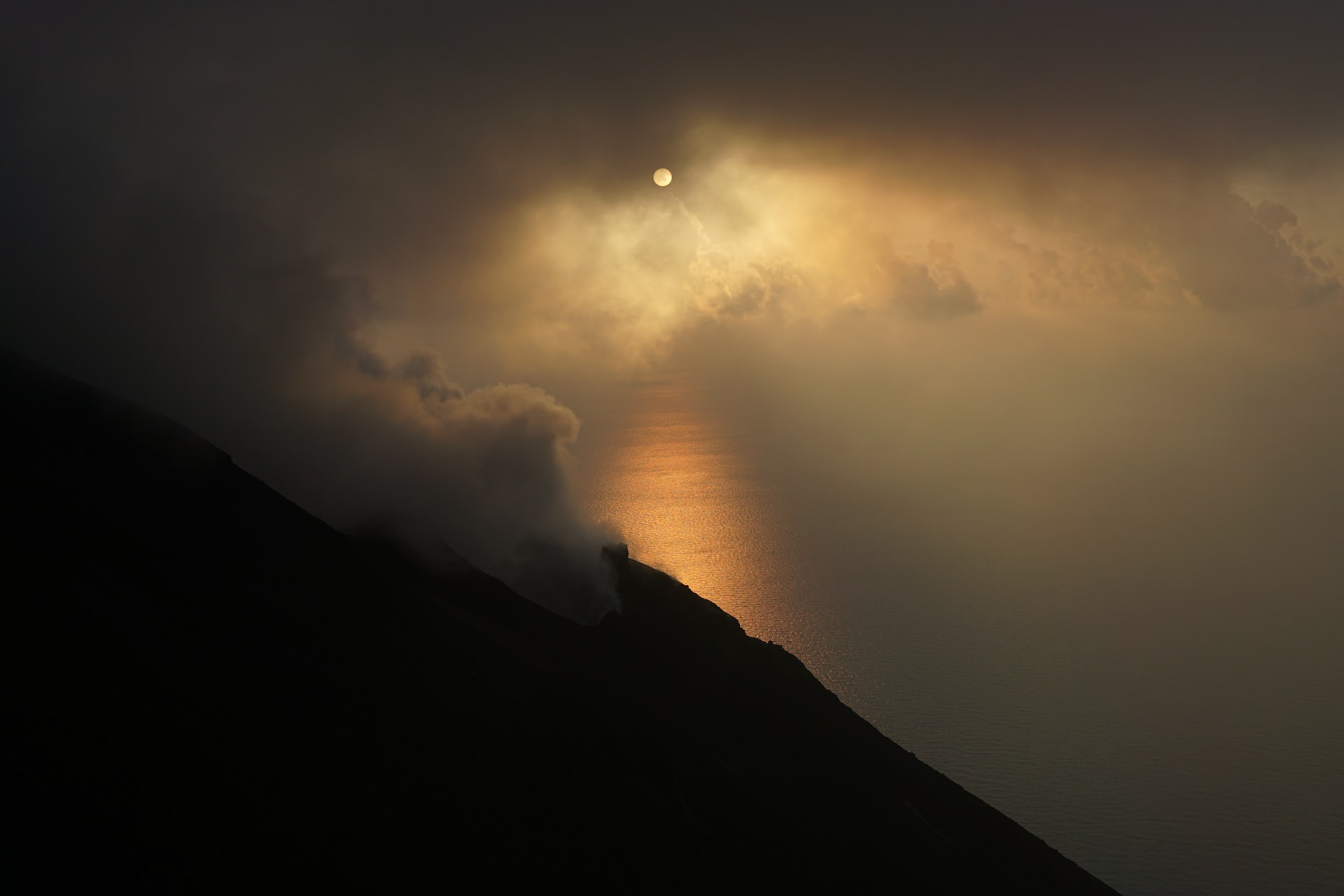
Stromboli holds a unique distinction among Italy's volcanoes. Unlike its counterparts, it maintains a near-constant state of mild eruption, earning it the nickname "Lighthouse of the Mediterranean." As twilight descends, the dark silhouette of Stromboli becomes illuminated by bursts of red-hot lava, casting an enchanting glow across the island.
These characteristic eruptions, known as Strombolian activity, consist of frequent explosions that propel incandescent lava fragments into the air. The rhythmic symphony of explosions, accompanied by the distinct sound of rumbling, creates an extraordinary display that has fascinated both scientists and adventurers for centuries.
Despite its ongoing volcanic activity, Stromboli has become a haven for nature lovers and intrepid travelers seeking an intimate encounter with the raw power of nature. Hiking to its summit under the guidance of experienced guides allows visitors to witness the awe-inspiring spectacle up close, while respecting the inherent risks associated with volcanic landscapes.
Vesuvius: The Destroyer of Pompeii
Nestled near the vibrant city of Naples, Mount Vesuvius looms as a reminder of the devastating power that lies dormant within. With its iconic, symmetrical cone shape and commanding presence, Vesuvius stands at the forefront of our collective imagination, forever etched in history due to its catastrophic eruption in 79 AD.
The eruption of Vesuvius buried the bustling Roman cities of Pompeii and Herculaneum under layers of ash and volcanic debris. The tragic preservation of these ancient cities offers a unique window into the past, allowing us to glimpse the lives of its inhabitants frozen in time. Vesuvius's historical significance and its potential for future eruptions make it an essential focal point for volcanic studies and a constant reminder of the delicate balance between civilization and the natural world.
Though currently dormant, Vesuvius remains an active volcano, monitored closely by scientists to detect any signs of reawakening. The surrounding region, with its fertile volcanic soil, has been transformed into a thriving agricultural area, producing renowned wines and delicious fruits. The juxtaposition of beauty, history, and danger makes Vesuvius a captivating destination.
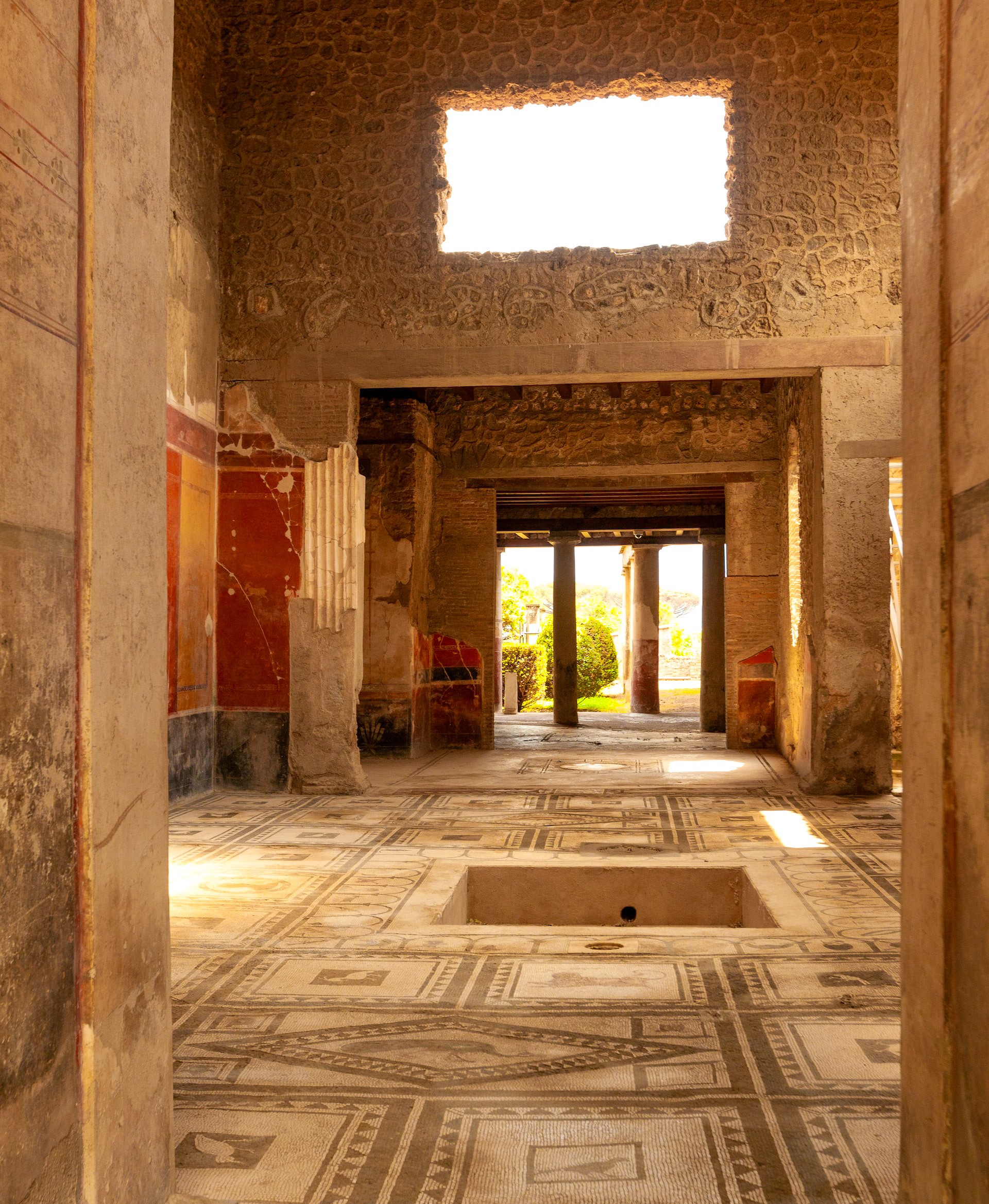 Villa in Pompeii
Villa in PompeiiVulcano: The Fiery Heart of the Aeolian Islands
Located in the Aeolian archipelago, Vulcano emerges as a fiery testament to the power of volcanic activity. This island, aptly named after the Roman god of fire, draws visitors with its unique landscape shaped by ancient and ongoing eruptions.
Vulcano's volcanic activity is evident in its fumaroles, steaming craters, and bubbling mud baths. The island's most iconic feature is the Gran Cratere, a volcanic cone that showcases the raw beauty of the Earth's geological processes. Hiking to its summit rewards adventurous souls with panoramic views of the Aeolian Islands and the surrounding Tyrrhenian Sea.
While Vulcano's eruptions have been relatively mild in recent history, its geological significance and the remnants of past volcanic events serve as a reminder of the island's active nature. Its magnetic allure, coupled with therapeutic mud baths and hot springs, create an irresistible draw for those seeking both relaxation and adventure.
Campi Flegrei: A Sleeping Beast Awakens
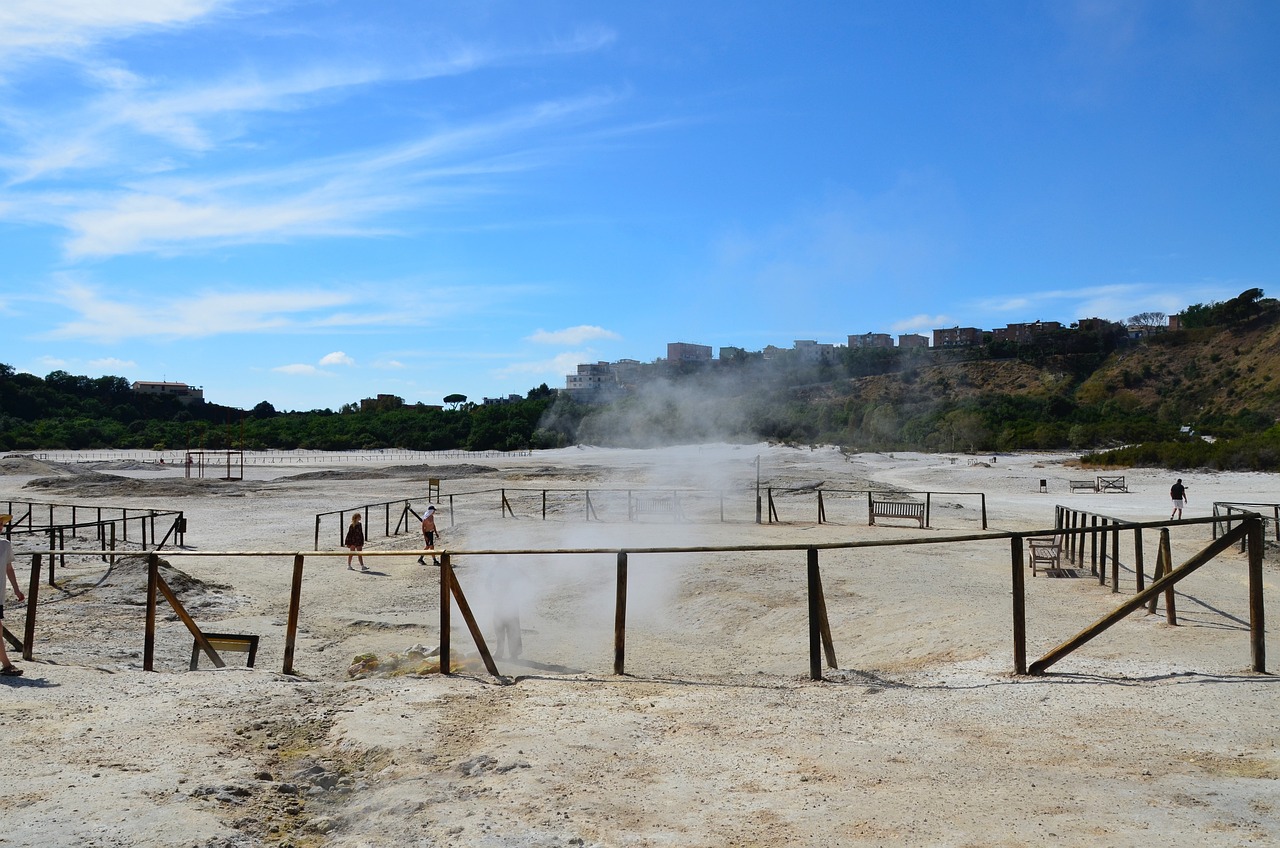
West of Naples lies the expansive volcanic complex known as Campi Flegrei, or Phlegraean Fields. Stretching over 13 kilometers, this caldera system encompasses a diverse landscape of volcanic features, including volcanic fields, hot springs, and volcanic lakes.
Despite its tranquil appearance, Campi Flegrei is currently under close scrutiny due to its "extremely dangerous" status.
The heightened risk associated with Campi Flegrei stems from its potential for a catastrophic eruption, which could have far-reaching consequences for all of the densely populated Naples metropolitan area.
A new study has revealed the very real danger of an eruption, and highlighted ground uplift and increased seismic activity, indicating the build-up of pressure beneath the surface. Nobody know if and when it will erupt but the risk is real. Very real. Such indicators highlight the importance of remaining vigilant and prepared in the face of potential volcanic threats.
Exploring the Campi Flegrei offers a glimpse into the intricate geological processes that shape our world. From the enchanting Solfatara, a geothermal field exuding sulfurous gases and boiling mud, to the mesmerizing Phlegraean Islands scattered in the Tyrrhenian Sea, this volcanic complex holds a blend of wonder, danger, and scientific fascination.
Which Towns in Italy Are "High Risk"
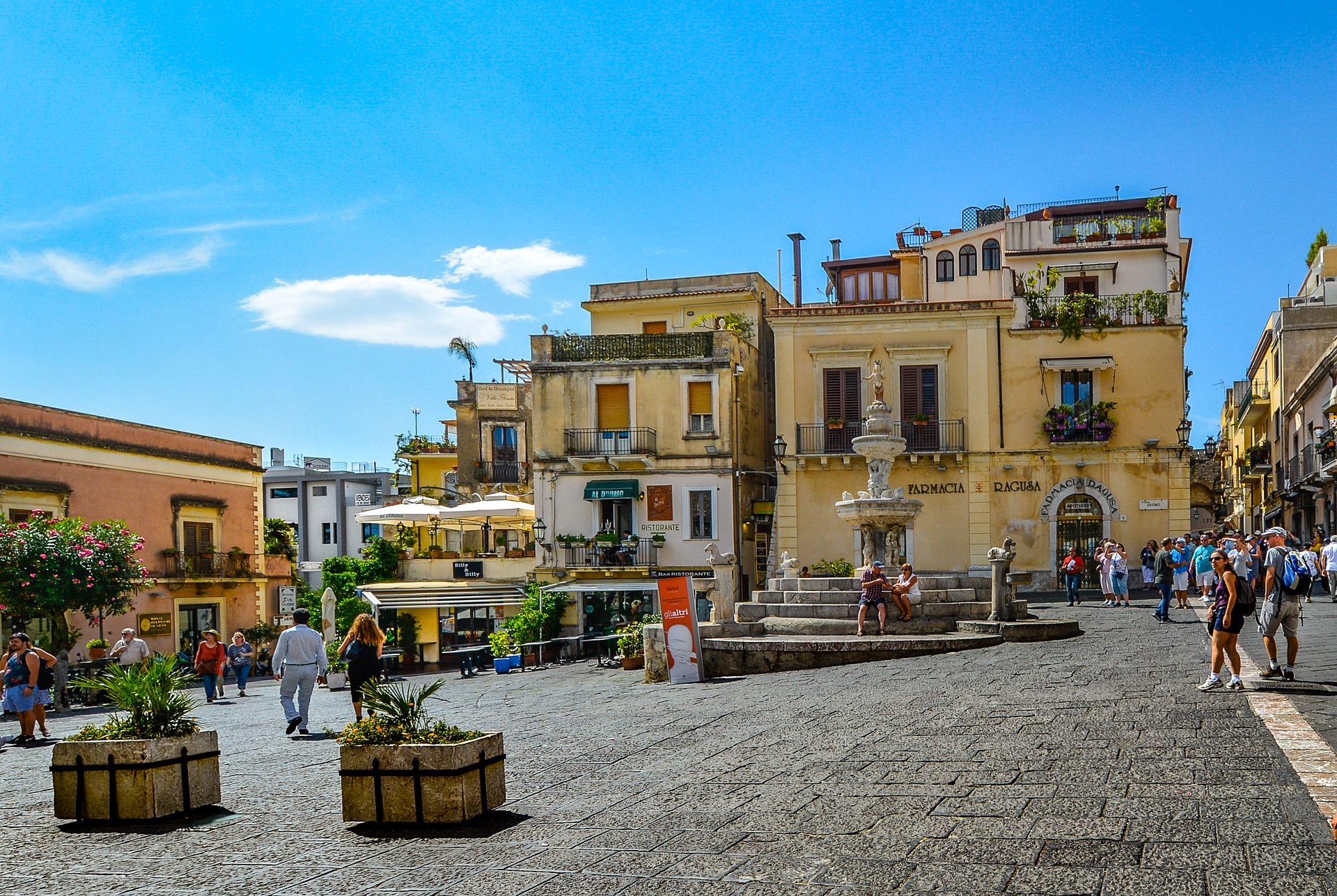 Taormina, one of the ""high risk" towns
Taormina, one of the ""high risk" townsWhile Italy has several volcanic areas, certain cities and towns are more vulnerable due to their proximity to active volcanoes. Here are some notable locations at risk:
Naples: As mentioned earlier, Naples lies in close proximity to the Campi Flegrei and Mount Vesuvius, making it one of the most at-risk cities in Italy. The metropolitan area of Naples is home to millions of people.
Catania: Located on the eastern coast of Sicily, Catania sits at the foot of Mount Etna, one of the most active and famous volcanoes in the world. The city and its surroundings face potential risks from volcanic activity, including lava flows and ashfall.
Taormina: Another Sicilian town at risk is Taormina, situated on the eastern coast near Mount Etna. While the town itself is not directly in the path of volcanic eruptions, it can be affected by ashfall and other associated hazards.
Pozzuoli: This coastal town near Naples is in the vicinity of the Campi Flegrei. With ongoing volcanic unrest in the area, Pozzuoli and its neighboring towns face potential risks such as ground uplift, seismic activity, and volcanic gas emissions.
Aci Castello: Located in Sicily, Aci Castello lies near Mount Etna and is susceptible to volcanic hazards. The town offers scenic views of the volcanic landscape but is also exposed to risks such as ashfall and lava flows.
Frequently Asked Questions:
Q: Which are the most active volcanoes in Italy?
Q: Which are the most active volcanoes in Italy?
A: Italy boasts several active volcanoes, including Mount Etna, Stromboli, Vesuvius, Campi Flegrei, and Mount Vulcano.
Q: Are there warning signs before a volcanic eruption?
Q: Are there warning signs before a volcanic eruption?
A: Volcanologists closely monitor seismic activity, gas emissions, ground deformation, and volcanic behavior to detect warning signs of potential eruptions. Currently, concern seems to be mostly about Campi Flegrei. Half a million people live in its shadow, in an area that experts have designated as the Red Zone.
Q: Has Italy experienced devastating volcanic eruptions in the past?
Q: Has Italy experienced devastating volcanic eruptions in the past?
A: Italy's history is marked by significant volcanic events, such as the eruption of Mount Vesuvius in 79 AD, which led to the destruction of Pompeii and Herculaneum.
Q: What safety measures are in place to protect residents near volcanoes?
Q: What safety measures are in place to protect residents near volcanoes?
A: Italy has established comprehensive monitoring systems, evacuation plans, and emergency response procedures to ensure the safety of residents in high-risk areas.
Disclaimer: The following article aims to provide information about the volcano risk in Italy. It is important to note that while every effort has been made to ensure the accuracy and reliability of the information presented, it should not be considered as professional advice. Before making any decisions regarding investments or living arrangements, it is highly recommended to consult with experts, local authorities, and conduct thorough research.
Please Book with Us... Maria here, if you enjoy my site I'd love your support.
Simply book your next trip anywhere (not only to Italy) via the link below or with any of the hotel links on the website.
You'll get the best deal available and the income I receive helps me to remain independent and to keep bringing you more of beautiful Italy.
More Travel Tips:
- Book your tickets to museums and other attractions in advance on Tiqets.com
- Book your accommodation. Booking.com and Agoda help you to book accommodation in advance
- Book your excursions. Wherever you go, make the most of your time! Excursions with professional guides will help you do this - choose a location and the best option for yourself on Viator or Getyourguide
- Book your car. At least a month before is best. Use Discover Car Hire.
- Cash Back on Flights: Great deals & money back with WayAway
- Get peace of mind when traveling. Get insured with VisitorsCoverage.com
- Home
- Moments in Italy
- Volcano Risk in Italy
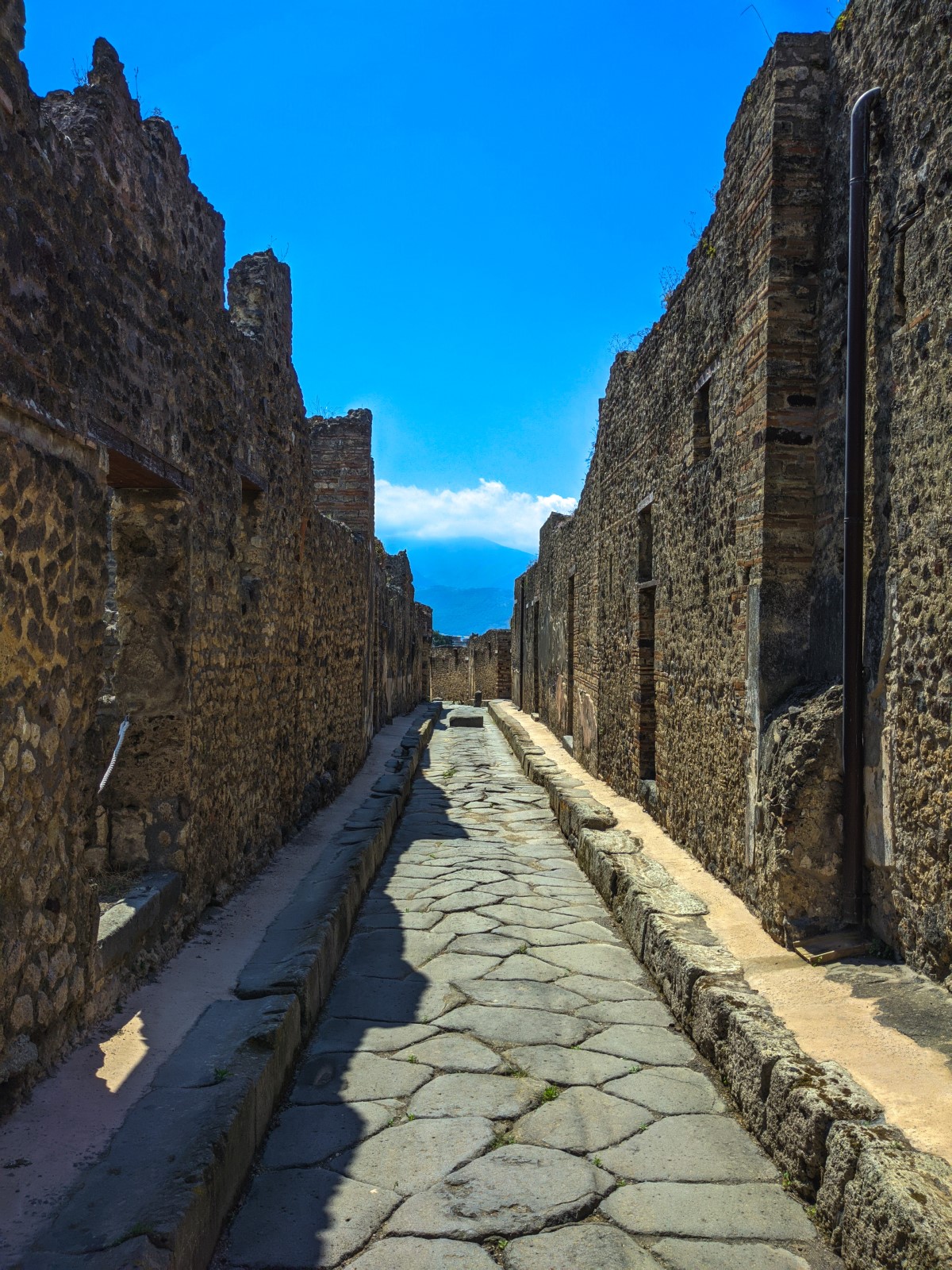



























New! Comments
Have your say about what you just read! Leave me a comment in the box below.